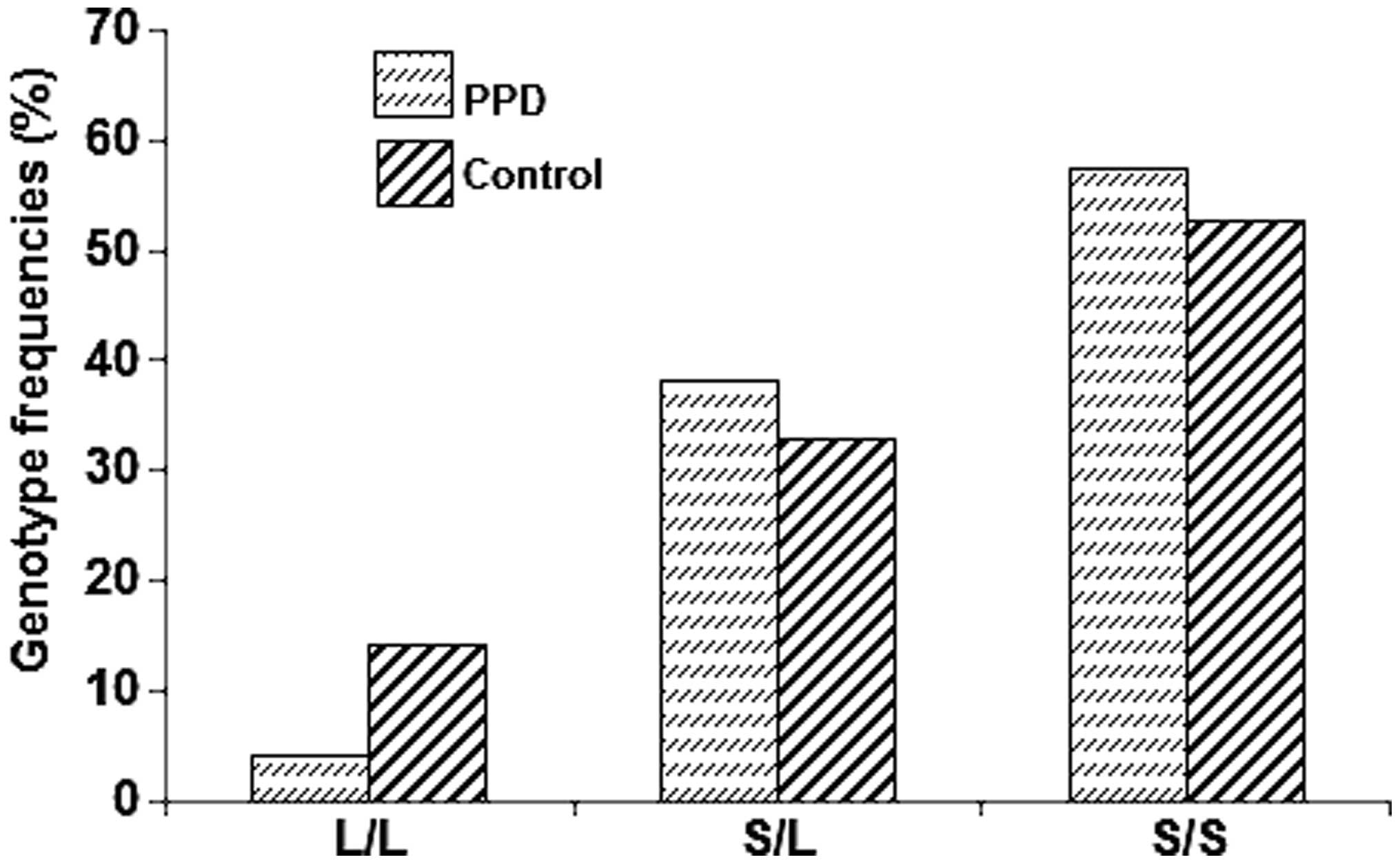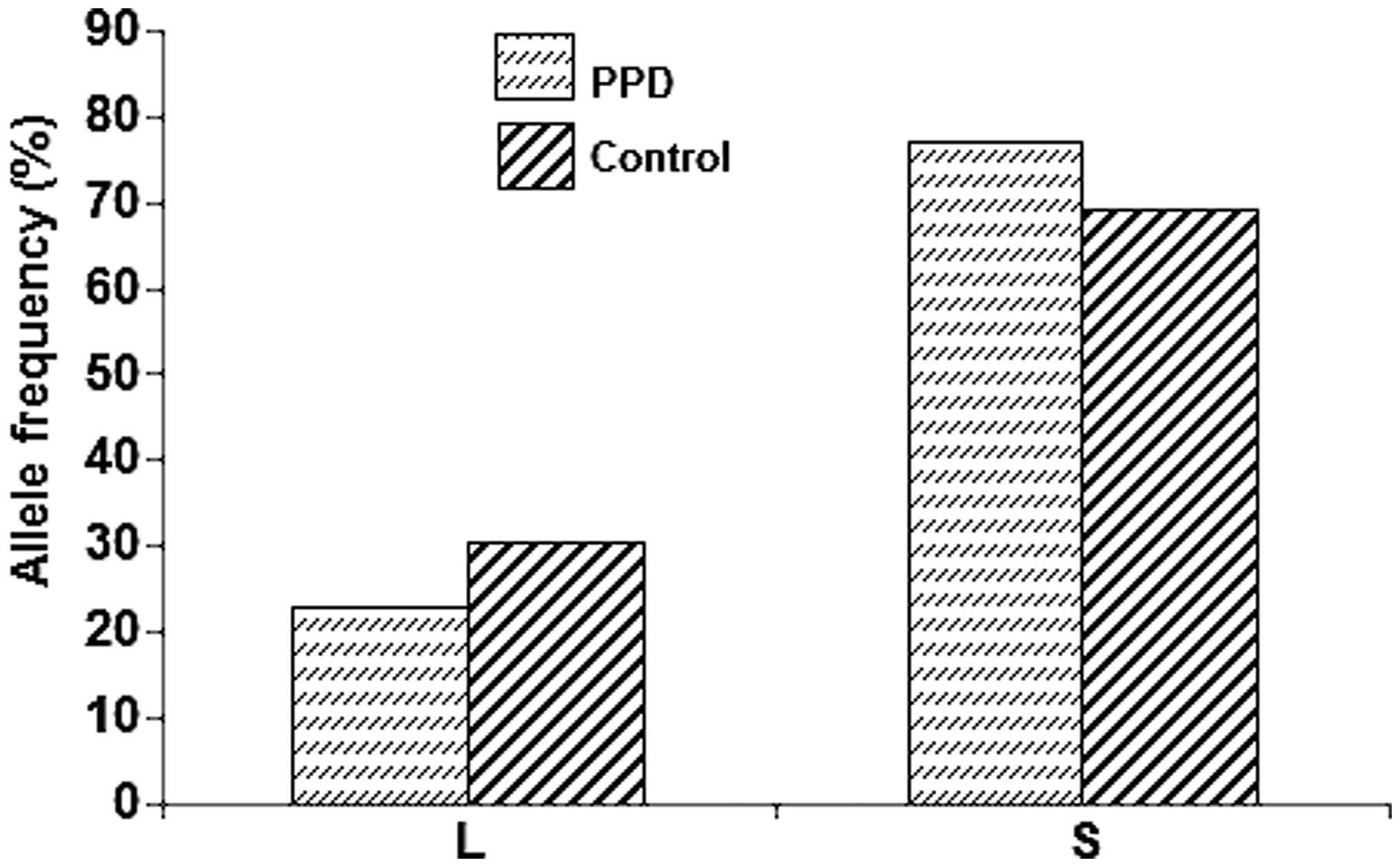|
1
|
O’Hara MW and McCabe JE: Postpartum
depression: current status and future directions. Annu Rev Clin
Psychol. 9:379–407. 2013. View Article : Google Scholar
|
|
2
|
Paulson JF and Bazemore SD: Prenatal and
postpartum depression in fathers and its association with maternal
depression: a meta-analysis. JAMA. 303:1961–1969. 2010. View Article : Google Scholar : PubMed/NCBI
|
|
3
|
Fitelson E, Kim S, Baker AS and Leight K:
Treatment of postpartum depression: clinical, psychological and
pharmacological options. Int J Womens Health. 3:1–14. 2010.
|
|
4
|
O’Keane V, Lightman S, Patrick K, et al:
Changes in the maternal hypothalamic-pituitary-adrenal axis during
the early puerperium may be related to the postpartum ‘blues’. J
Neuroendocrinol. 23:1149–1155. 2011. View Article : Google Scholar
|
|
5
|
Skalkidou A, Hellgren C, Comasco E, Sylvén
S and Sundström Poromaa I: Biological aspects of postpartum
depression. Womens Health (LondEngl). 8:659–672. 2012. View Article : Google Scholar
|
|
6
|
Vliegen N, Casalin S and Luyten P: The
course of postpartum depression: a review of longitudinal studies.
Harv Rev Psychiatry. 22:1–22. 2014. View Article : Google Scholar : PubMed/NCBI
|
|
7
|
Maes M, Ringel K, Kubera M, Berk M and
Rybakowski J: Increased autoimmune activity against 5-HT: a key
component of depression that is associated with inflammation and
activation of cell-mediated immunity, and with severity and staging
of depression. J Affect Disord. 136:386–392. 2012. View Article : Google Scholar
|
|
8
|
Maes M, Leonard BE, Myint AM, Kubera M and
Verkerk R: The new ‘5-HT’ hypothesis of depression: cell-mediated
immune activation induces indoleamine 2,3-dioxygenase, which leads
to lower plasma tryptophan and an increased synthesis of
detrimental tryptophan catabolites (TRYCATs), both of which
contribute to the onset of depression. Prog Neuropsychopharmacol
Biol Psychiatry. 35:702–721. 2011. View Article : Google Scholar
|
|
9
|
Lee S, Jeong J, Kwak Y and Park SK:
Depression research: where are we now? Mol Brain. 3:82010.
View Article : Google Scholar : PubMed/NCBI
|
|
10
|
Pitychoutis PM, Dalla C, Sideris AC,
Tsonis PA and Papadopoulou-Daifoti Z: 5-HT(1A), 5-HT(2A), and
5-HT(2C) receptor mRNA modulation by antidepressant treatment in
the chronic mild stress model of depression: sex differences
exposed. Neuroscience. 210:152–167. 2012. View Article : Google Scholar : PubMed/NCBI
|
|
11
|
Stephens MA, McCaul ME, Weerts EM and Wand
G: Serotonin transporter-linked polymorphic region (5-HTTLPR)
genotype is associated with cortisol responsivity to naloxone
challenge. Psychopharmacology (Berl). 224:223–230. 2012. View Article : Google Scholar
|
|
12
|
Heils A, Teufel A, Petri S, et al: Allelic
variation of human serotonin transporter gene expression. J
Neurochem. 66:2621–2624. 1996. View Article : Google Scholar : PubMed/NCBI
|
|
13
|
Dai Y, Yu X, Xiao Z, et al: Comparison of
Chinese and international psychiatrists’ views on classification of
mental disorders. Asia Pac Psychiatry. 6:267–273. 2014. View Article : Google Scholar : PubMed/NCBI
|
|
14
|
Zimmermann-Peruzatto JM, Almeida S, Lucion
AB, et al: Evaluation of the 5-HTTLPR and 5 -HTTVNTR polymorphisms
in the serotonin transporter gene in women with postpartum
depression. Neurosci Med. 3:275–280. 2012. View Article : Google Scholar
|
|
15
|
Pitt B: “Atypical” depression following
childbirth”. Br J Psychiatry. 114:1325–1335. 1968. View Article : Google Scholar : PubMed/NCBI
|
|
16
|
Mohammed ES, Mosalem FA, Mahfouz EM and
Abd ElHameed MA: Predictors of postpartum depression among rural
women in Minia, Egypt: an epidemiological study. Public Health.
128:817–824. 2014. View Article : Google Scholar : PubMed/NCBI
|
|
17
|
Ayuso-Mateos JL, Vázquez-Barquero JL,
Dowrick C, et al: Depressive disorders in Europe: prevalence
figures from the ODIN study. Br J Psychiatry. 179:308–316. 2001.
View Article : Google Scholar : PubMed/NCBI
|
|
18
|
Bener A, Burgut FT, Ghuloum S and Sheikh
J: A study of postpartum depression in a fast developing country:
prevalence and related factors. Int J Psychiatry. 43:325–337. 2012.
View Article : Google Scholar
|
|
19
|
Mitchell C, Notterman D, Brooks-Gunn J, et
al: Role of mother’s genes and environment in postpartum
depression. Proc Natl Acad Sci USA. 108:8189–8193. 2011. View Article : Google Scholar
|
|
20
|
Pinheiro RT, Coelho FM, Silva RA, et al:
Association of a serotonin transporter gene polymorphism (5-HTTLPR)
and stressful life events with postpartum depressive symptoms: a
population-based study. J Psychosom Obstet Gynaecol. 34:29–33.
2013. View Article : Google Scholar : PubMed/NCBI
|
|
21
|
Kuzelova H, Ptacek R and Macek M: The
serotonin transporter gene (5-HTT) variant and psychiatric
disorders: review of current literature. Neuro Endocrinol Lett.
31:4–10. 2010.PubMed/NCBI
|
|
22
|
Domínguez-López S, Howell R and Gobbi G:
Characterization of serotonin neurotransmission in knockout mice:
implications for major depression. Rev Neurosci. 23:429–443.
2012.PubMed/NCBI
|
|
23
|
Sharp T and Cowen PJ: 5-HT and depression:
is the glass half-full? Curr Opin Pharmacol. 11:45–51. 2011.
View Article : Google Scholar : PubMed/NCBI
|
|
24
|
Landén M and Thase ME: A model to explain
the therapeutic effects of serotonin reuptake inhibitors: the role
of 5-HT2 receptors. Psychopharmacol Bull. 39:147–166.
2006.PubMed/NCBI
|
|
25
|
Smeraldi E, Zanardi R, Benedetti F, et al:
Polymorphism within the promoter of the serotonin transporter gene
and antidepressant efficacy of fluvoxamine. Mol Psychiatry.
3:508–511. 1998. View Article : Google Scholar : PubMed/NCBI
|
|
26
|
Guscott M, Bristow LJ, Hadingham K, et al:
Genetic knockout and pharmacological blockade studies of the 5-HT7
receptor suggest therapeutic potential in depression.
Neuropharmacology. 48:492–502. 2005. View Article : Google Scholar : PubMed/NCBI
|
|
27
|
Watanabe MA, Nunes SO, Amarante MK, et al:
Genetic polymorphism of serotonin transporter 5-HTTLPR: involvement
in smoking behaviour. J Genet. 90:179–185. 2011. View Article : Google Scholar : PubMed/NCBI
|
|
28
|
Hoefgen B, Schulze TG, Ohlraun S, et al:
The power of sample size and homogenous sampling: association
between the 5-HTTLPR serotonin transporter polymorphism and major
depressive disorder. Biological Psychiatry. 57:247–251. 2005.
View Article : Google Scholar : PubMed/NCBI
|
|
29
|
Nobile M, Cataldo MG, Giorda R, et al: A
case-control and family-based association study of the 5-HTTLPR in
pediatric-onset depressive disorders. Biol Psychiatry. 56:292–295.
2004. View Article : Google Scholar : PubMed/NCBI
|
|
30
|
Gonda X, Juhasz G, et al: Subthreshold
depression is linked to the functional polymorphism of the
5HTtransporter gene. J Affect Disord. 87:291–297. 2005. View Article : Google Scholar : PubMed/NCBI
|
|
31
|
Zhang K, Xu Q, Xu Y, et al: The combined
effects of the 5-HTTLPR and 5-HTR1A genes modulates the
relationship between negative life events and major depressive
disorder in a Chinese population. J Affect Disord. 114:224–231.
2009. View Article : Google Scholar
|
|
32
|
Hemmati S, Kahrizi K, Najmabadi H and
Sahrawian S: Analysis of association serotonin transporter gene and
antidepressant response to citalopram in iranian major depressive
population. European Psychiatry. 27:12012. View Article : Google Scholar
|
|
33
|
Cervilla JA, Molina E, Rivera M, et al;
PREDICT Study Core Group. The risk for depression conferred by
stressful life events is modified by variation at the serotonin
transporter 5HTTLPR genotype: evidence from the Spanish
PREDICT-Gene cohort. Mol Psychiatry. 12:748–755. 2007. View Article : Google Scholar : PubMed/NCBI
|
|
34
|
Steffens DC, Svenson I, Marchuk DA, et al:
Allelic differences in the serotonin transporter-linked polymorphic
region in geriatric depression. Am J Geriatr Psychiatry.
10:185–191. 2002. View Article : Google Scholar : PubMed/NCBI
|
|
35
|
Clarke H, Flint J, Attwood AS and Munafò
MR: Association of the 5-HTTLPR genotype and unipolar depression: a
meta-analysis. Psychol Med. 40:1767–1778. 2010. View Article : Google Scholar : PubMed/NCBI
|
|
36
|
Furlong RA, Ho L, Walsh C, et al: Analysis
and meta-analysis of two serotonin transporter gene polymorphisms
in bipolar and unipolar affective disorders. Am J Med Genet.
81:58–63. 1998. View Article : Google Scholar : PubMed/NCBI
|
|
37
|
Minov C, Baghai TC, Schüle C, et al:
Serotonin-2A-receptor and -transporter polymorphisms: lack of
association in patients with major depression. Neurosci Lett.
303:119–122. 2001. View Article : Google Scholar : PubMed/NCBI
|
|
38
|
Xia DS, Guo QY, Liu YQ, et al: Association
of serotonin transporter gene linked polymorphic region
polymorphism with early onset myocardial infarction and platelet
membrane glycoprotein I b. Zhonghua Yi Xue Yi Chuan Xue Za Zhi.
26:31–34. 2009.(In Chinese). PubMed/NCBI
|
|
39
|
Shen Y, Li H, Gu N, et al: Relationship
between suicidal behavior of psychotic inpatients and serotonin
transporter gene in Han Chinese. Neurosci Lett. 372:94–98. 2004.
View Article : Google Scholar : PubMed/NCBI
|












